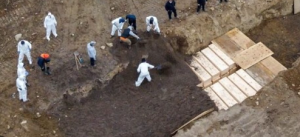
The Lasting Shadow of Childhood Trauma: How ACEs Shape Young Adulthood
More than 60% of U.S. adults report experiencing adverse childhood experiences (ACEs), a sobering statistic that underscores the profound impact of early trauma. ACEs—such as neglect, parental separation, or exposure to substance use disorders—are not just painful memories; they shape future outcomes in ways that ripple across generations. A new large-scale study examining nearly one million young adults reveals how ACEs significantly increase the likelihood of economic hardship, criminal justice involvement, and lower educational attainment. The findings paint a stark picture of how childhood adversity follows individuals into early adulthood, reinforcing cycles of disadvantage.
The High Cost of ACEs: What the Research Tells Us
Researchers linked administrative, survey, and criminal justice data to track the lives of 930,000 individuals born between 1999 and 2003 across four states: Maryland, Michigan, North Carolina, and North Dakota. Unlike previous studies relying on self-reported data, this approach used government records to objectively analyze the long-term socioeconomic impact of ACEs. The results confirmed what public health practitioners and policymakers have long suspected: childhood trauma leaves deep scars that manifest in young adulthood.
Young adults with ACEs were significantly more likely to face socioeconomic hardships, including:
- Higher likelihood of felony charges – The probability of criminal justice involvement was 67% higher among those with any ACEs and nearly double for those with four or more ACEs.
- Increased teenage parenthood – The odds of becoming a teenage parent were 98% higher for those with at least one ACE.
- Greater financial struggles – Individuals with ACEs were 32% more likely to experience poverty and 75% more likely to require housing assistance.
- Reliance on Medicaid – ACEs were linked to a 70% higher likelihood of Medicaid enrollment, signaling ongoing economic instability.
- Reduced educational attainment – Those with multiple ACEs were 18% less likely to be enrolled in an educational institution.
These findings underscore how trauma doesn’t simply end with childhood—it lays the foundation for long-term socioeconomic struggles.
The Cycle of Disadvantage: Why Childhood Trauma Matters
ACEs don’t just affect individuals; they have profound societal consequences. The estimated lifetime societal cost of ACEs-related poor health is a staggering $2.4 million per affected person. But the impact isn’t just economic—it affects community well-being, workforce stability, and criminal justice expenditures.
Why does this happen? The study suggests a compounding effect: ACEs often occur alongside financial instability, creating a double burden. A child experiencing parental incarceration, for example, is not only dealing with emotional trauma but also the economic fallout of a missing parent. These disadvantages persist into young adulthood, limiting access to education, employment opportunities, and stable housing.
Breaking the Cycle: What Can Be Done?
This research highlights the urgent need for early intervention and prevention strategies. Some key actions include:
- Strengthening family support programs – Providing resources for parents struggling with addiction, domestic violence, or economic hardship can prevent ACEs before they occur.
- Expanding mental health services for children – Trauma-informed care in schools and pediatric settings can help children cope with adversity and develop resilience.
- Investing in economic stability programs – Ensuring access to affordable housing, food security programs, and financial assistance can mitigate the long-term effects of ACEs.
- Reforming the criminal justice system – Policies that support rehabilitation over punishment, particularly for juvenile offenders, can help break cycles of incarceration.
What’s Next?
While this study offers compelling evidence of the lasting impact of ACEs, it also raises important questions:
- How can policymakers ensure that children exposed to trauma receive support before they experience long-term consequences?
- What role can schools and community organizations play in identifying at-risk youth?
- How do structural inequalities—such as racial and economic disparities—exacerbate the impact of ACEs, and what policies can help address them?
Future research should continue exploring how early interventions can alter life trajectories for children facing adversity. Additionally, as more states join data-sharing initiatives like the Criminal Justice Administrative Records System (CJARS), researchers will have a clearer picture of how trauma shapes economic and criminal justice outcomes across different demographics.
Join the Conversation
Childhood trauma doesn’t have to define a person’s future. Communities, policymakers, and researchers all have a role to play in breaking the cycle. What steps do you think are most critical in addressing ACEs at a systemic level? Have you seen programs in your community making a difference? Share your thoughts below or join the discussion on social media using #ACEsImpact and #BreakingTheCycle.
Be the Difference – Subscribe Today!
Don’t get left behind—stay ahead of the latest public health breakthroughs and challenges. Subscribe now for free weekly updates that empower you to take meaningful action.
🔗 Momentum starts with you! Share this blog and help others stay informed.



